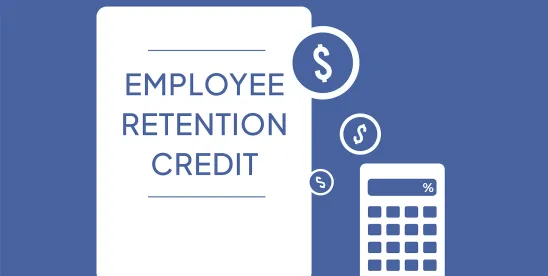On July 26, the IRS reiterated its warnings to businesses that filed improper employee retention credit (ERC) refund claims, citing five new red flags indicating improper claims. The release, IR-2024-198, follows an earlier release in June that also identified warning signs of improper ERC claims, asserting that the vast majority of pending ERC claims are improper. The latest release includes a foreshadowing of further steps the IRS may take in its continuous battle against fraudulent ERC claims, including a temporary reopening of an IRS voluntary disclosure program that has expired.
The ERC law provides for a refundable credit for wages paid by small to mid-size companies between March 13, 2020, and Sept. 30, 2021, if several conditions are satisfied. The threshold condition is that either the company’s business operations were fully or partially suspended because of a COVID-related governmental order, or the company experienced a significant decline in gross receipts for the quarter compared to the same quarter in 2019. The IRS has been alarmed that many companies claimed the ERC based on the governmental order test when not otherwise satisfying the other requirements.
One of the newly declared red flag warnings of improper claims is where a company is unable to support how a government order fully or partially suspended business operations. This test may initially have been believed to be satisfied by companies required to shut down during the early months of the pandemic. However, after businesses were allowed to reopen under restrictions, the IRS guidance required the company to demonstrate that changes to its business operations to comply with the government order resulted in a 10% or greater reduction in its ability to provide goods or services to its customers (IRS Notice 2021-20, Q&A #18). The new IRS release is an acknowledgement that the IRS will expect documentation proving a reduction in efficiency of at least 10% due to the governmental order. It is not adequate to show that customers did not patronize the company due to a government order, or that they were concerned about contracting COVID – the company must be able to tie the reduction in efficiency to changes in its business operations due to the governmental order. Many companies will find it difficult to document the reduction in efficiency three or four years after the fact, even if the order did impact efficiency. Companies who relied on the government order test should begin reviewing business records to collect data establishing a 10% efficiency reduction before they receive denial of their refund claimed or notice of examination.
The four other new red flags are:
- Essential Businesses: Many companies claimed the ERC due to a general lockdown but were exempt from the order because they were an essential business. These companies will need to prove that they conducted another line of business that was not an essential business and that was required to suspend business operations. They will have to establish that the non-essential line of business accounted for more than a nominal portion of its total business.
- Large Employers: Wages paid by a “large employer” are eligible for the ERC only if the company paid employees who were not working. A large employer is a company that had more than 100 average fulltime employees in 2019 for 2020 claims and more than 500 average fulltime employees in 2019 for 2021 claims. Large employers who claimed the ERC should collect documentation to prove that the employee was not performing services and be prepared to present that information during an IRS examination or in response to a claim denial.
- PPP Loans: Wages paid with the proceeds of a Paycheck Protection Program (PPP) loan that was forgiven are not eligible for the ERC. If the wages for which the ERC was claimed were paid with a PPP loan, but the loan was not forgiven, the documentation regarding the failure to obtain loan forgiveness should be assembled.
- Wages Paid to Family Members: The ERC cannot be claimed for wages paid to family members of an owner of the business, and the list of disqualified family members is extremely broad. Employers should review their claims to make sure that none of the ineligible family members were erroneously included in the claim.
In addition to these five new red flags, the new IRS release reminds companies about the previously published 10 red flag warnings. These prior red flags include claiming the ERC for periods after a government order expired; relying on an OSHA guideline as a government order to claim the ERC, and claiming the ERC because of general supply chain disruptions.
The IRS is looking to clear its huge backlog of ERC claims, so examiners may not be patient in allowing time to respond to a request for documentation. Therefore, it is advisable to be prepared with documents supporting all of the ERC claim requirements.
The IRS warned businesses to review their pending ERC claims with the red flags in mind and to consult with a tax professional. In addition, the IRS release reminds companies that they can withdraw an improper ERC claim ahead of any IRS enforcement and that companies can amend a pending claim to reduce the amount of the claimed.



 />i
/>i
